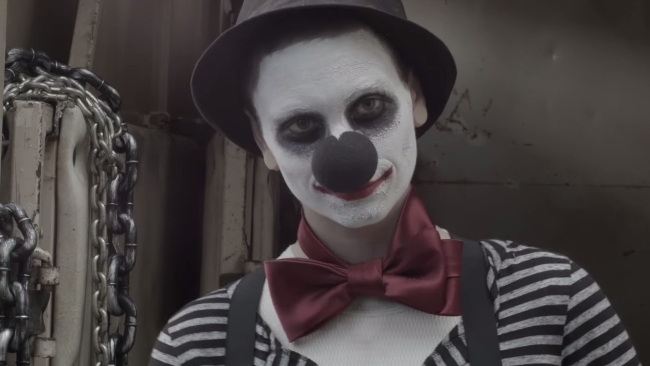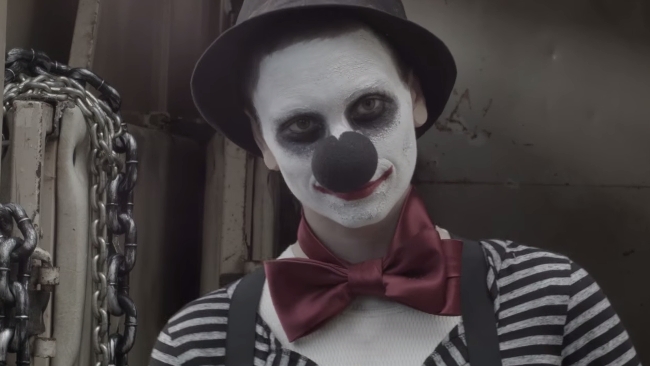
 48 Hour Film Project and Blackmagic Pocket Camera
48 Hour Film Project and Blackmagic Pocket Camera
Rakesh Malik details his experiences with the Blackmagic Pocket Camera while enduring his second 48 Hour Film Project.
After the experience we had with the 48 Hour Film Project, we got the team back together to try again for the horror version.
48 Hour Primer
For those unfamiliar with the 48 Hour Film Project, here is a summary of how the competition works:
The team leader or their proxy go to registration with the completed leader agreement. Registered teams receive a randomly chosen genre. In the case of the horror project, all of the genres have a horror theme. All teams receive a set of required element, including:
- A required line
- A prop
- The name of a character (there is a male as well as female variant)
- The character's profession
- A location
Each team has from 7pm Friday until 7pm Sunday to complete the film. The only preparation permitted before Friday at 7pm is gathering cast, crew, equipment and securing locations.
Preproduction
One of our team members hosted us, allowing us to use her house both as a place to say and as a location for the shoot. We had scouted some nearby locations beforehand, so we had some options in mind already. We designated three people as our primary writing team and one as our editor. Though everyone who had headed out to the house Friday evening contributed ideas, we let the writing team take charge.
Meanwhile, our editor started drawing a poster while the director and I started discussing ideas for shots. I got the camera gear ready, charging batteries.
Our camera operator surprised us by recruiting a composer, who was the only person on the team besides the editor who didn't get involved with sets and equipment, because we wanted them to have as much time as possible to work on their jobs.
Our shrinking kit
Our camera kit consists of a Blackmagic Cinema Camera (BMCC) MFT and two Pocket Cinema cameras. Normally, we prep the BMCC for operation on sticks and one of the Pocket cameras set up on the shoulder rig, so that we can smoothly switch between sticks and handheld, but we can put the shoulder rig on sticks also if necessary. Unfortunately, the BMCC and one Pocket camera were non-functional, so we only had one camera for this shoot, meaning no backups, a less than ideal situation.
Our sound kit consisted of a Sound Devices 633 and an Audio Technica BP4027 14" stereo shotgun mic on a boompole, with a blimp and windsock. We had a one person sound team.
The Shoot Day
Bright and early Saturday morning, we discussed costumes and shots over breakfast and coffee. Several people went out to costume and Goodwill stores to look for costume parts and makeup, including fake wounds.
Those of us who stayed behind started working on sets, continually astonished by how many props our host had available for us to use for the film.
The weather was inconsistent; it would rain heavily while we shot one scene and turn sunny for the next. Having no choice, due to the stringent time constraints, all we could do was pull out an umbrella to keep over the camera operator and camera and roll with it as best we could.
After shooting a scene, we dropped off footage at the edit station and grabbed a new memory card, so that our editor could start working on the footage while we continued to shoot. We kept our production simple, relying on careful shot design and skillful directing, rather than adding complexity.
As far as production crew, we were very light. We had a camera operator, DP and sound person and that was it. The director worked closely with the talent and didn't get in our way, watching the screen on the camera when he could, otherwise waiting to see the playback. The one exception was the GoPro Hero3+ that we discovered that one of the crew had brought, along with a homemade jib, which worked quite well, though it would have been easier to use if the GoPro had the ability to transmit previews over wifi while it was recording. We filmed extra takes
Since we had such a small crew, our cast chipped in to set up the carnival scene while we were filming a climactic scene at dusk. When we returned, we were surprised by what they'd built. Once the sun set and we added lights and a mirror ball, it looked quite a bit better than we'd hoped.
Most of the crew got into costume for the carnival scene. Only two of us, the sound recordist and I, stayed behind the camera. Even the camera operator stepped in as cast. I operated the camera when she was on screen.
Due to the time constraints, we filmed in ProRes rather than RAW. We knew we wouldn't have time for the RAW workflow, given our stringent time constraints, and we've worked with ProRes enough to know its limitations. We recorded in film log, resulting in somewhat flat and washed out footage, but we figured we'd benefit from the latitude due to the drastic changes in light as the rain and sun alternated.
Production Notes, Post and Screening
One advantage in working with Blackmagic cameras is that they're very simple, making production relatively simple. There aren't a whole lot of options on the cameras, for example, no picture profiles other than Rec 709 and Film Log. We were careful to adjust our white balance as the weather changed and as we transitioned into night with tungsten dominating.
That said, Blackmagic cameras aren't very durable, so it's advisable to have backup bodies when using them. If we hadn't had backups, we would have been forced to use an alternative solution, since two of my Blackmagic cameras were on their way back to the company for repair.
We didn't have time to finish our color grade and some of the color graded clips that our assistant editor worked on ended up not getting integrated back into the final cut, resulting in a suboptimal presentation, but an adjustment layer and a few selective grades helped quite a bit. It still looked good on the big screen. Our dialogue was very clear, but we didn't get all of our Foley effects into the final cut.
The 48 Hour Film Project has stringent rules regarding title cards before and after the film, as well as the length of the film and the length of the credit sequence. We had hoped to put an outtake after the end title sequence, but we couldn't fit it into the time limit, so we had to let that go.
We each chipped in under $20 for food for the weekend and our host used the money to purchase groceries, setting up a buffet for each meal, plus snacks and drinks throughout the day. We had plenty of food, though not a whole lot of time to eat it on Saturday. Our host scrounged up enough old clothing and props to cover most of our costumes and makeup, though we still ended up paying approximately $250 for makeup and outfits that
our host wasn't able to provide.
48 hour Film Projects are challenging, but it's possible to do professional grade work with a good crew and even get a little sleep during the weekend, though usually not enough.
As to whether or not we did a good job...decide for yourself.
Warning: this is a horror film; there is some mild gore and horror in a scene towards the end of the film. Don't watch it if you don't think you want to see this.
Tags: Production



Comments